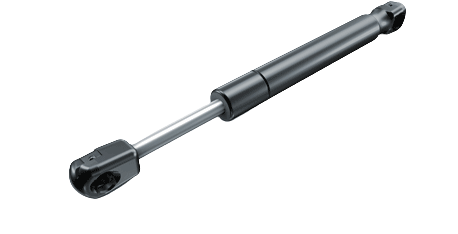Renewable energies are booming with a very high degree of expansion worldwide. The goal is to make the most of the sun and wind while minimizing technical wear and unforeseen downtime.
For these cases, Stabilus offers solutions with fully developed technologies. Gas springs and dampers protect solar park trackers and secure the hatches of wind turbines, ensuring that sustainable energy generation and long-lasting, cost-effective operation go hand in hand.
Operation of Gas Springs and Dampers in Solar Panels
Gas springs, also known as pneumatic springs, operate by compressing gas within them to provide force and support. In the context of solar panels, these springs have several specific roles, and their operation can be explained as follows:
Gas springs, also known as pneumatic springs, operate by compressing gas within them to provide force and support. In the context of solar panels, these springs have several specific roles, and their operation can be explained as follows:
- Adjustment and Support of the Inclination Angle: Gas springs are used to adjust the inclination angle of solar panels. This is crucial for maximizing solar energy capture throughout the day and in different seasons of the year. The springs allow for smooth and controlled panel adjustment.
- Facilitating Maintenance: They allow solar panels to be lifted or tilted easily for maintenance or cleaning tasks. This is especially useful in large installations where access to the panels can be difficult.
- Damping Movements: Gas springs help dampen movements and prevent sudden jolts that could damage the panels or the support structure, especially under strong wind conditions.
Example of Operation
Imagine a solar panel system with a manual adjustment mechanism. By manipulating a lever connected to the gas spring, the technician can change the inclination angle of the panel. The gas spring compresses when the panel is lowered and expands when it is raised, providing a force that counteracts the weight of the panel.
Thus, the angle can be adjusted smoothly and controlled, and the panel remains firmly in the new position without additional effort. Its efficient and reliable operation significantly contributes to the optimization of the performance of solar energy systems.
- Facilitate the adjustment of the inclination angle
- Support the weight of the panel
- Simplify maintenance tasks
- Protect the structure from sudden movements

Stabilus Lift-O-Mat: Stabilus’ Offering for Solar Panels
For installation in solar panels, the Lift-O-Mat model by Stabilus is particularly suitable. Here is a brief explanation of why this model is ideal for this application:
Features and Advantages:
- Smooth and Precise Adjustment: The Lift-O-Mat allows for smooth and precise adjustment of the inclination angle of solar panels, which is crucial for optimizing solar energy capture throughout the day and in different seasons.
- Constant Support: It provides a constant force to support the weight of the solar panel, keeping it in the desired position without the need for additional force. This is essential for the stability and efficiency of the system.
- Ease of Use: Its design facilitates installation and adjustment, allowing for quick and easy changes in the panel’s orientation without the need for special tools.
- Durability: Built to withstand adverse environmental conditions, the Lift-O-Mat is resistant to corrosion and temperature changes, ensuring a long service life even in demanding outdoor environments.
- Reduced Maintenance: It requires little maintenance, which reduces operational costs and downtime, improving the overall efficiency of the solar panel system.
Specific Application
- Fixed and Tracking Solar Panels: In fixed solar panels, the Lift-O-Mat helps adjust and maintain the optimal inclination. In solar tracking systems, it allows dynamic adjustments to follow the sun’s trajectory, significantly improving energy efficiency.
In summary, the Lift-O-Mat model by Stabilus is ideal for use in solar panels due to its precise adjustment capability, constant support, durability, and ease of use, which helps maximize the efficiency and longevity of the solar system.
Other Renewable Energy Installations
Gas springs and dampers are also used in wind turbines for various critical functions that contribute to the system’s efficiency and safety. We will discuss these installations and the role of gas pistons in another article.
Solar Parks: Safe and Low-Wear Trackers
The closer to the equator, the higher the performance of photovoltaic installations. However, at the same time, the change in the sun’s position has a significantly greater effect than at other latitudes. For this reason, installations are usually equipped with solar trackers from various manufacturers, featuring drives designed to constantly orient the panels mounted on axes at the correct angle according to the sun’s position.
Stabilus’ damping technology protects the mechanical system of the solar tracker and prevents the entire system from moving when there is wind. This effectively protects the technology designed to function for many years.
CONTACT US
RELATED ARTICLES

